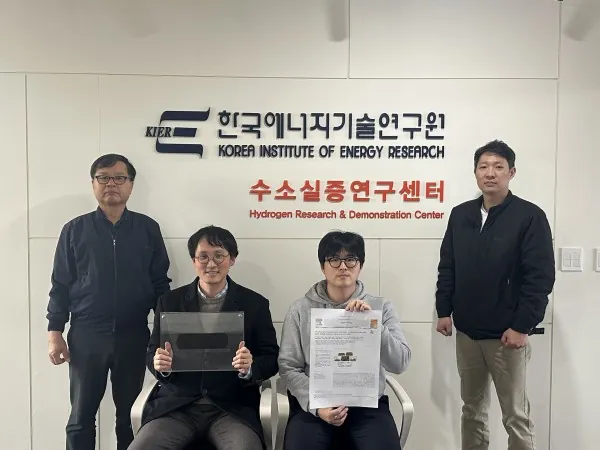
Revolutionary AI Technology Transforms Fuel Cell Analysis: What You Need to Know!
2024-12-30
Author: John Tan
Groundbreaking Achievement in Fuel Cell Analysis
In a groundbreaking achievement, Dr. Chi-Young Jung and his research team at the Hydrogen Research & Demonstration Center of the Korea Institute of Energy Research (KIER) have developed a cutting-edge method that revolutionizes the analysis of carbon fiber paper, a critical component in hydrogen fuel cells. This new technique offers an astonishing 100-fold increase in speed compared to traditional analysis methods, utilizing advanced digital twin technology and artificial intelligence (AI) learning.
Importance of Carbon Fiber Paper
Why does this matter? Carbon fiber paper is essential in hydrogen fuel cell stacks, aiding in the efficient discharge of water and fueling supply. However, its performance deteriorates over time due to changes in its microstructure. Previously, accurately assessing the condition of carbon fiber paper required damaging the material and performing tedious examinations with electron microscopes—a process that could take hours and was often impractical for real-time assessments.
Innovative Analytical Approach
Enter the innovative approach developed by Dr. Jung's team! They have harnessed the power of X-ray diagnostics along with an AI-based image learning model to conduct precise analyses. This method completely bypasses the need for destructive testing and electron microscopy, making it a game-changer for real-time diagnostics.
Data-Driven Machine Learning Model
The researchers extracted a substantial dataset—5,000 images from over 200 distinct samples of carbon fiber paper—to train their machine learning model. With over 98% accuracy, this model can predict the three-dimensional distribution of critical components like carbon fibers, binders, and coatings. Such precision allows for immediate comparisons of the material’s current state against its original specifications, enabling rapid identification of performance issues.
Dramatic Time Savings
Traditional methods of analysis could take more than two hours; however, the new system can pinpoint degradation, damaged areas, and severity of the damage in mere seconds using only X-ray tomography equipment. This massive reduction in time represents not only increased efficiency but also potential cost savings for manufacturers.
Enhancements in Fuel Cell Performance
But that’s not all! The research team didn't stop at diagnosing issues. They delved deeper, analyzing how the design parameters such as the thickness of carbon fiber paper and binder content influence overall fuel cell performance. By extracting optimal design specifications, they proposed strategic enhancements to increase fuel cell efficiency—an essential advancement in the push towards greener energy technologies.
Future Implications of the Technology
Dr. Chi-Young Jung emphasized the significance of their work, stating, “This study exemplifies the robust synergy of AI with virtual technology in material analysis. It establishes a clear understanding of the relationship between material structure and its functional properties, showcasing immense practical implications.” He further speculated on the future impact this technology could have on areas like secondary batteries and water electrolysis.
Conclusion: The Future is Powered by AI
As the world pivots toward sustainable energy solutions, this innovative method of analyzing carbon fiber paper could unlock unprecedented advancements in fuel cell technology, potentially paving the way for more efficient and sustainable energy sources. Buckle up, because the future of clean energy is here, and it's powered by AI!


 Brasil (PT)
Brasil (PT)
 Canada (EN)
Canada (EN)
 Chile (ES)
Chile (ES)
 Česko (CS)
Česko (CS)
 대한민국 (KO)
대한민국 (KO)
 España (ES)
España (ES)
 France (FR)
France (FR)
 Hong Kong (EN)
Hong Kong (EN)
 Italia (IT)
Italia (IT)
 日本 (JA)
日本 (JA)
 Magyarország (HU)
Magyarország (HU)
 Norge (NO)
Norge (NO)
 Polska (PL)
Polska (PL)
 Schweiz (DE)
Schweiz (DE)
 Singapore (EN)
Singapore (EN)
 Sverige (SV)
Sverige (SV)
 Suomi (FI)
Suomi (FI)
 Türkiye (TR)
Türkiye (TR)
 الإمارات العربية المتحدة (AR)
الإمارات العربية المتحدة (AR)